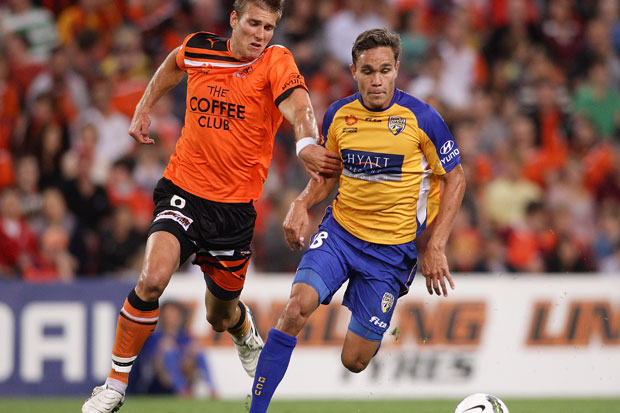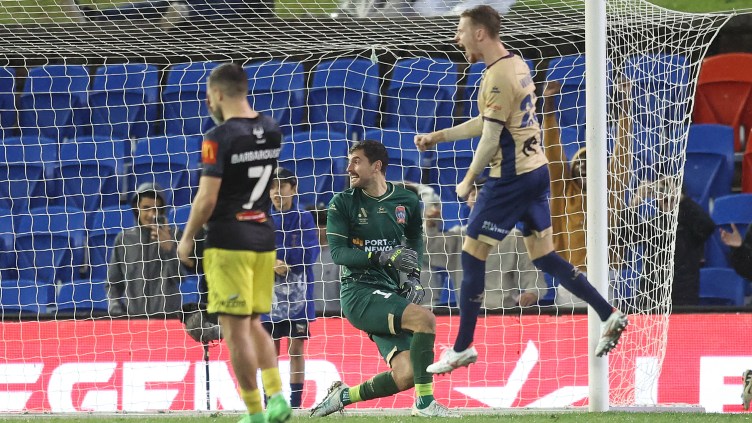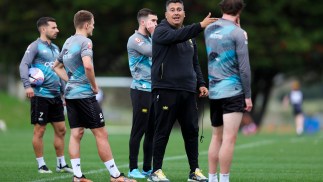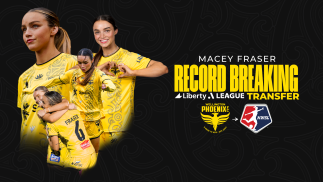One of the emerging features of the Hyundai A-League is the evolving tactical awareness of both the managers and players.
One of the emerging features of the Hyundai A-League, and it has been in full evidence so far this season, is the evolving tactical awareness of both the managers and players.
Right from the opening minutes of the opening game of the season, between Newcastle Jets and Melbourne Heart, it was clear the respective managers had been working hard to bring an exciting new dimension to the competition this season.
Both the Jets and Heart were pressing their opponent high, putting pressure in the opposition to play-out, and forcing errors.
John van ‘t Schip’s Heart even came to Newcastle with a plan to explode in the front third, and his recruitment and the way he set up the team was all geared around transitioning swiftly into the final third.
While it didn’t reap the three points that afternoon, it was nonetheless exciting to see Jason Hoffman and Fred bursting out of central midfield, with the likes of Mate Dugandzic and David Williams looking spritely ahead of them.
While there was plenty of initiative to get excited about in the opening game, it has been the work by opposition managers against the defending champions, Brisbane Roar, that has been the real tactical highlight of the season so far.
Watching how they have set up to try stop Ange Postecoglou’s well-oiled machine has hitherto made for compelling viewing.
In my column on The Roar after the opening weekend, I have previously discussed how teams might have to adapt a higher press, putting pressure on the Roar defenders and Erik Paartalu, in order to stop them from playing out and building their passing momentum.
In the two weeks since, there have been excellent attempts at doing exactly that, and both Vitezslav Lavicka and Miron Bleiberg are to be commended for setting up their teams to try and shake Postecoglou’s men off their perch.
While both Sydney FC and Gold Coast United finished up 2-0 and 3-0 losers respectively, it’s arguable that the score flattered the Roar on both occasions.
Had either Sydney or Gold Coast bagged the opening goal, which their play no doubt deserved, then the Roar would have been facing a completely different pressure.
Apart from pressing Brisbane high, the other thing that Lavicka did in week two was go over the top of the Roar defence early, looking to utilise the space in behind central defenders Matt Smith and Matt Jurman.
Apart from some alert coverage with his feet from Michael Theoklitos, acting as a sweeper-keeper, what Sydney really lacked that night was a pacey front-man and the execution to round off their tactics.
This was despite the best efforts of Nicky Carle, who was a constant menace and showed speed not usually associated with his game.
For all Sydney’s efforts, Lavicka’s game-plan came unstuck when goalkeeper Liam Reddy spilt a ball, gifting Besart Berisha his opening Hyundai A-League goal.
From there the Roar looked comfortable enough, Sydney unable to fully execute their plan.
Fast forward six days and it was clear Miron Bleiberg had been watching the way Lavicka set things up at the SFS.
He told viewers of Fox Sports’ pre-game show as much in a revealing tactical chat, describing, with the use of a whiteboard, the two areas his team hoped to exploit the Roar in.
The first was in the high press, which United did extremely well, numbering up up the pitch, even forcing Theoklitos to occasionally hit the flanks with an aerial pass.
Rarely have Brisbane looked as pushed as they were in the opening half.
But like Sydney had done a week earlier, Gold Coast let Brisbane off the hook, failing to capitalise on their domination with a goal, and then giving up a soft set piece goal at the other end.
The other area Bleiberg spoke about was exploiting the space in behind the Roar defence. In truth Gold Coast didn’t get as much change here as Sydney did, although Dutch debutant Maceo Rigters did muscle his way in behind once in the first half.
While neither Lavicka or Bleiberg were ultimately able to crack the Roar code, they have nonetheless given others insight into how they might approach the task, when it’s eventually their turn.
On the evidence of the past two weeks, Roar’s incredible undefeated streak, now at 31 games, will continue to test the tactical nous of opposition managers, and for a league only in its seventh season, that’s most welcome.
Indeed, it’s another sign of the league’s growing technical maturity.
Rini Coolen is the next manager to get a crack on Friday night, and there’s no doubt he will have assessed Lavicka and Bleiberg’s work, deciding whether the best bet is to drop off and utilise the space in behind, or push on and potentially expose his central defenders to being hit the other way.
Most importantly, perhaps, is whether he can get his men to sustain whatever game plan he devises, not switching off for a second, either in general play or at a set piece.
That’s the other thing about Brisbane. They’ve been conditioned, through the pre and regular season work of Ken Stead, to see out a match and stick to their method.
Meanwhile, Postecoglou, Rado Vidosic and Fernando Alves have given the players the technical knowledge and belief to find solutions and work their way through the more challenging scenarios, and you sense these might multiply in the coming months.
That’s a good thing.
What Brisbane Roar have done over the past season or so is lift the technical level of the Hyundai A-League significantly, and if this means more tactical innovation to try and stop them, it’s a welcome addition.




